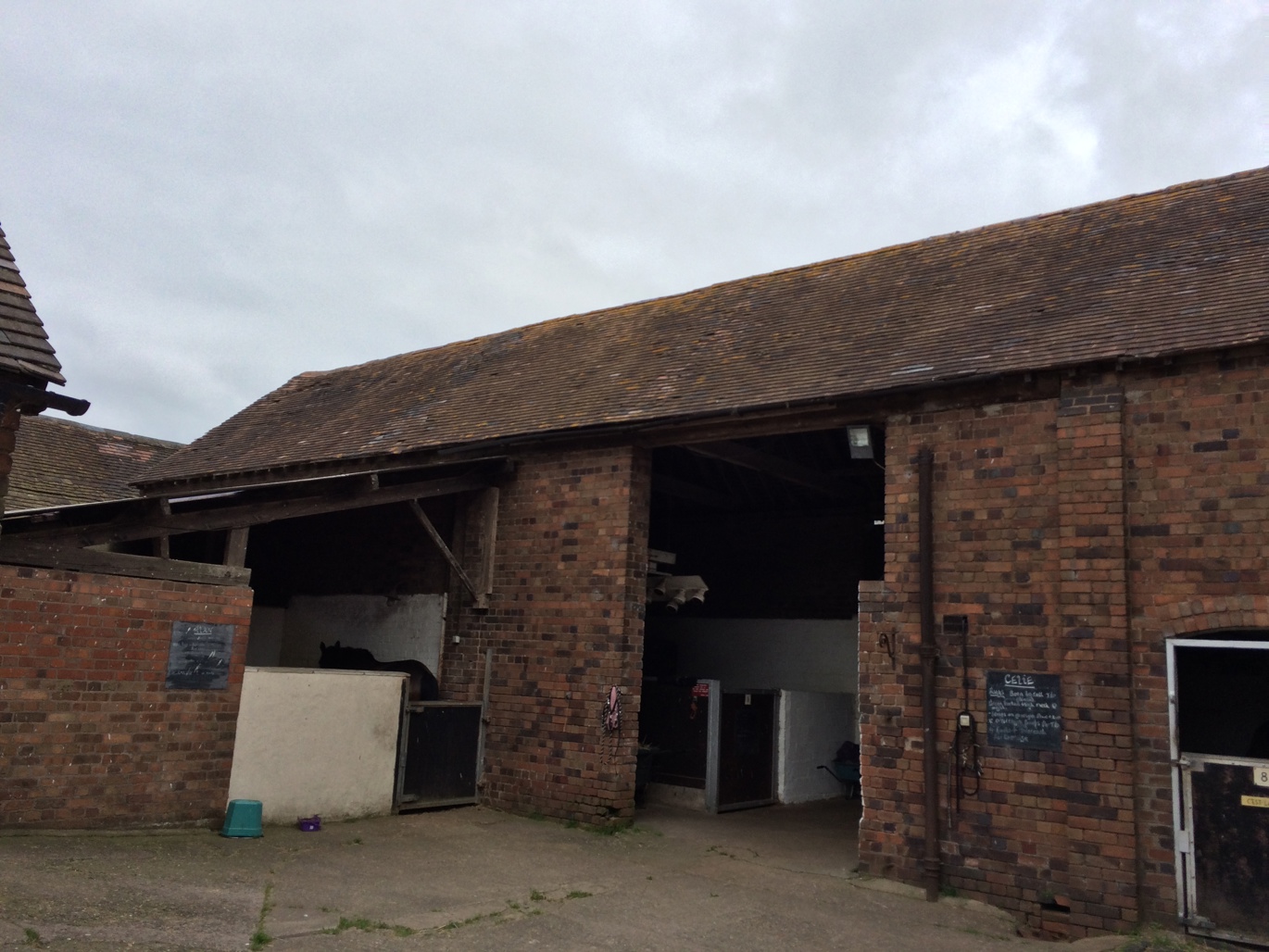
RammSanderson Ecology Ltd undertook a bat building inspection and a suite of nocturnal surveys in 2016 of a complex of buildings that were used for the Wyke Equestrian Centre, Shifnal. These surveys were to update the pre-existing surveys undertaken in 2014, to validate the redevelopment of the complex under a Low Impact Class Licence (LICL) for bats.
Two dusk emergence and one dawn re-entry survey was completed following industry good practice guidelines[1], identifying a single common pipistrelle (Pipistrellus pipistrellus) and a solitary brown long-eared (Plecotus auritus) roosting within one of the buildings, previously identified in 2014.
Therefore, the works to the building identified to contain roosting bats would require a licence, however due to the small number of bats (2), common species identified and the type of roost, the works would be applicable under a Low Impact Class Licence (LICL), meaning a quicker and cheaper procedure to under the works legally with proportionate levels of consideration based on the findings of the surveys.
[1] Collins, J. (ed.)(2016) Bat Surveys for Professional Ecologists: Good Practise Guidelines (3rd edn). The Bat Conservation Trust, London. The LICL was to legally enable BNP Paribas to redevelop the Wyke Equestrian Centre that was in decreasing condition into residential properties by renovating the existing buildings.
The Licence
RammSanderson successfully obtained a LICL for the site. The Registered Licenced consultant ecologist oversaw the supervision works to the building identified to be used by roosting bats whilst providing advice to the contractors to be aware of bats within the rest of the site and providing guidance in the event a bat is found elsewhere on site.
Prior to the supervised works commencing on the building, two bat boxes were positioned on nearby trees as temporary roost for the translocation of any bats found to be roosting within the building during these works. These temporary roost boxes will remain in situ on site for 5 years after the development is complete, as a requirement of compensation for the loss of a roost under the licence.
The client was in favour of increasing and improving the sites ability to support roosting bats to help support the local bat populations. Therefore, further enhancement in the way of a closed rafter box was able to be incorporated into the design of the renovated building. The design of the rafter box would provide suitable roosting features for pipistrelle and long eared bats, with entry points mimicking the access of the bats observed during the nocturnal surveys. This will aid the successful of the uptake of the rafter box when opportunistic bats return to the site the following season. Additionally, a single monitoring survey was advised one year after the development completion to establish the status of the population and success of the mitigation.